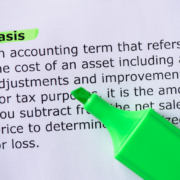IRS News Regarding Employer Reversion and Spinoff/Termination
- Learn about employer reversion and how the IRS treats it.
- Find information about spinoff/termination transactions involving excess assets.
- Learn about the two-tier rate structure of excise tax on employer reversion.
- Find out if defined contribution plans are subject to excise taxes.
Generally, when a qualified retirement plan terminates with surplus funds, Internal Revenue Code Section 4980 imposes an excise tax on any plan funds and property that revert to the employer sponsoring the plan. We refer to this as “employer reversion.”
In Revenue Procedure 2022-28, the IRS recently notified qualified plan sponsors and employers that it wouldn’t issue letter rulings on whether an employer's reversion from a qualified defined benefit plan (commonly called a pension) has occurred in connection with a spinoff/termination transaction involving excess assets.
According to the IRS guidance, a “spinoff/termination transaction involving excess assets” is one in which:
- The plan sponsor/employer spins off less than 100% of the assets of a defined benefit plan to another defined benefit plan sponsored or maintained by the same employer — including members of the employer’s single-employer group,
- The defined benefit plan receiving the spinoff assets is terminated within a short time after receiving those assets, and
- Assets remain in the terminated defined benefit plan’s trust after distribution of all benefits to or on behalf of participants and their beneficiaries.

Two-tier rate structure of excise tax on employer reversion
The base excise tax in question is 20% of the amount of any employer reversion from the plan. The excise tax increases to 50% of any employer reversion unless:
- The employer establishes or maintains a “qualified replacement plan,” or
- The terminating plan provides additional benefits that take effect on the termination date.
This two-tier excise rate structure has two primary purposes. First, it’s designed to recapture to the employer the tax benefits of tax-deferred earnings during the life of the plan. Second, it’s intended to encourage the plan sponsor to either maintain a qualified plan after terminating the defined benefit plan or to provide benefit increases before terminating the plan.
What about defined contribution plans?
For all practical purposes, defined contribution plans — such as 401(k)s — generally aren’t subject to the excise tax. This is because defined contribution plans involve individual accounts. Thus, assets typically don’t revert to the employer upon plan termination. Rather, they’re distributed to the respective accounts of participants and beneficiaries.
If your organization sponsors a pension that could soon or eventually be subject to a spinoff/termination transaction involving excess assets, the recent Revenue Procedure brings important news. Have questions about the tax implications of your qualified retirement plan? Call Fiducial at 1-866-FIDUCIAL or make an appointment at one of our office locations to discuss your situation.
Ready to book an appointment now? Click here. Know someone who might need our services? We love referrals!
For more small business COVID-19 resources, visit Fiducial’s Coronavirus Update Center to find information on SBA loans, tax updates, the Paycheck Protection Program, and paid sick and family leave.









